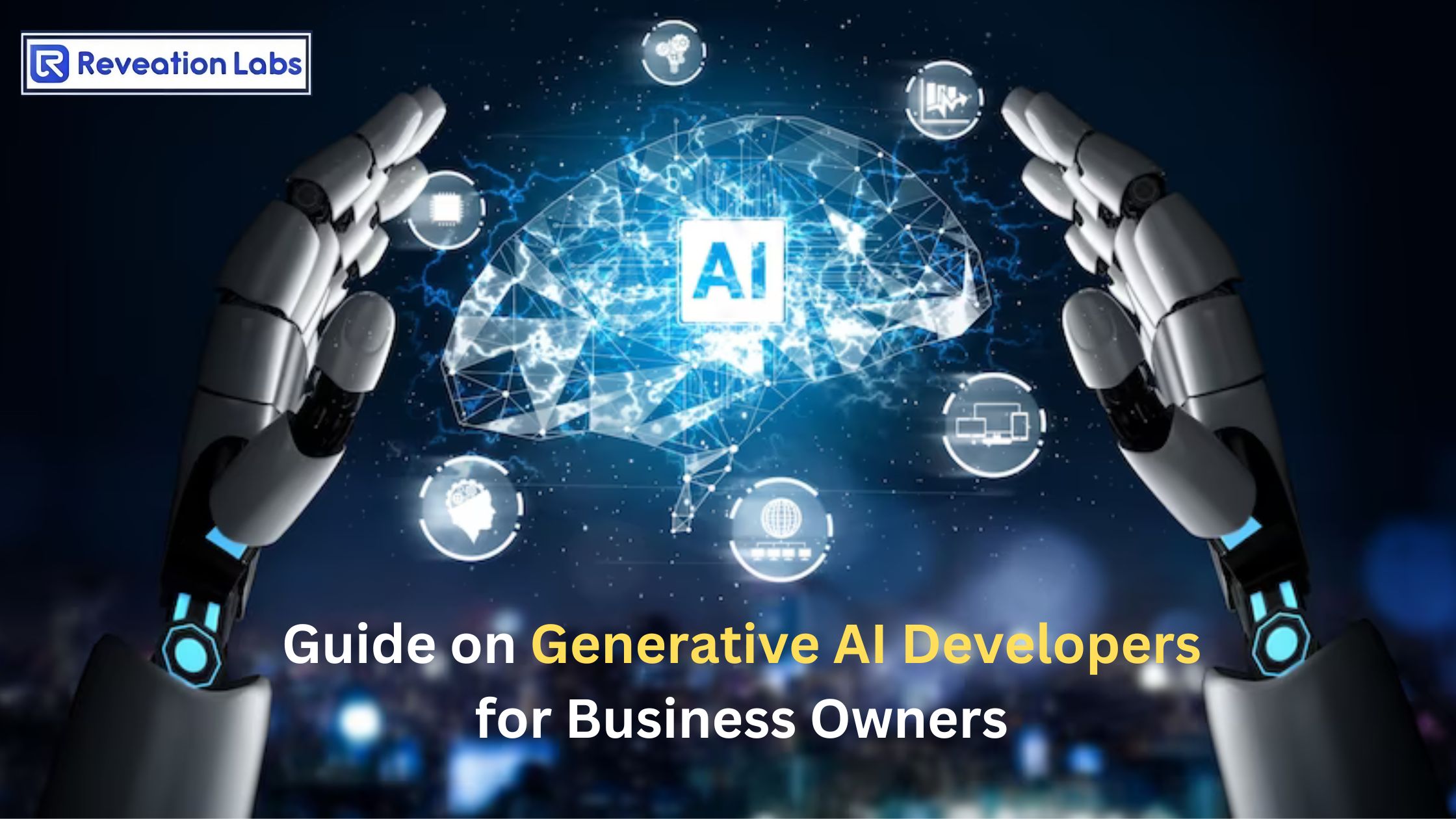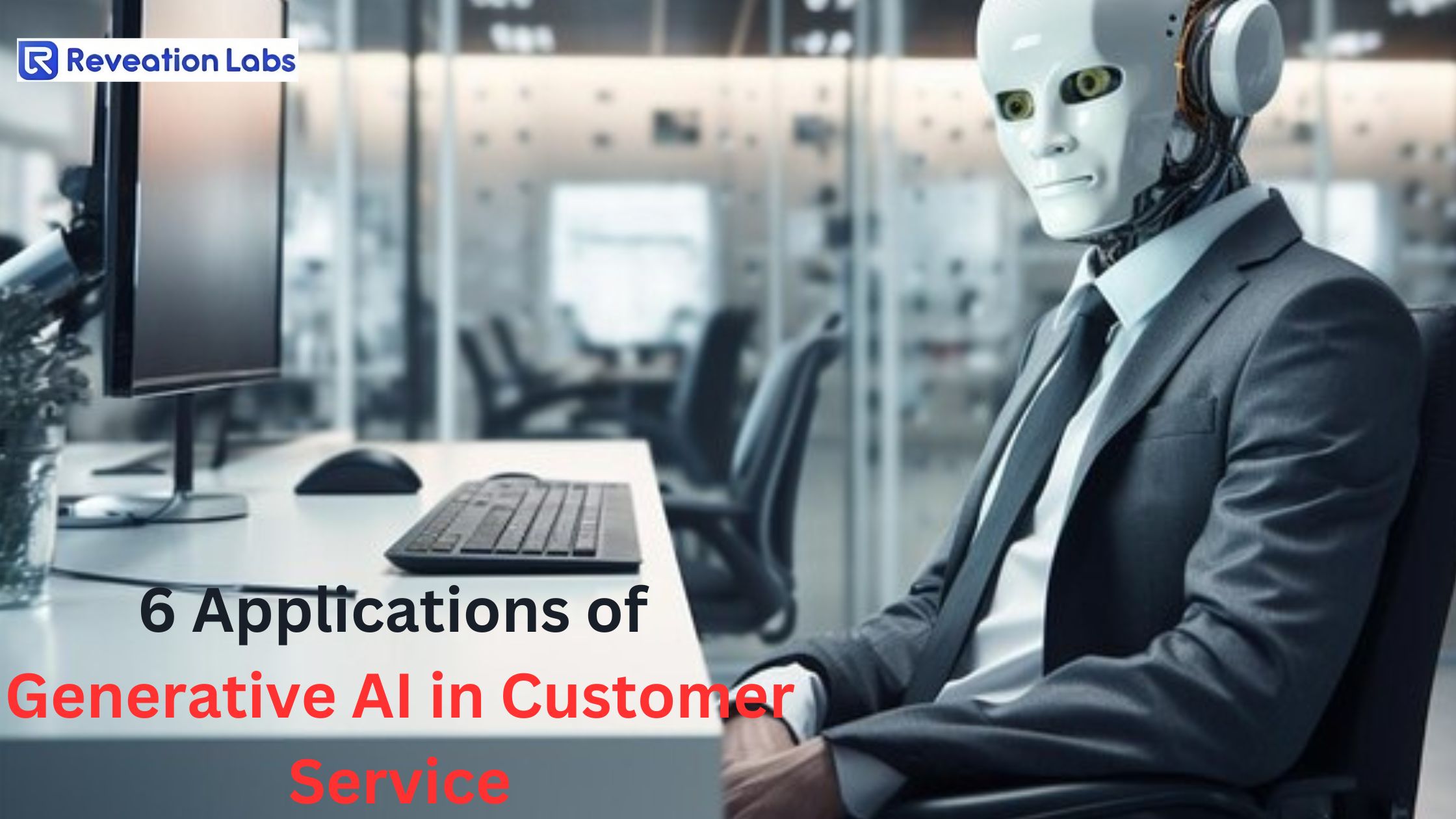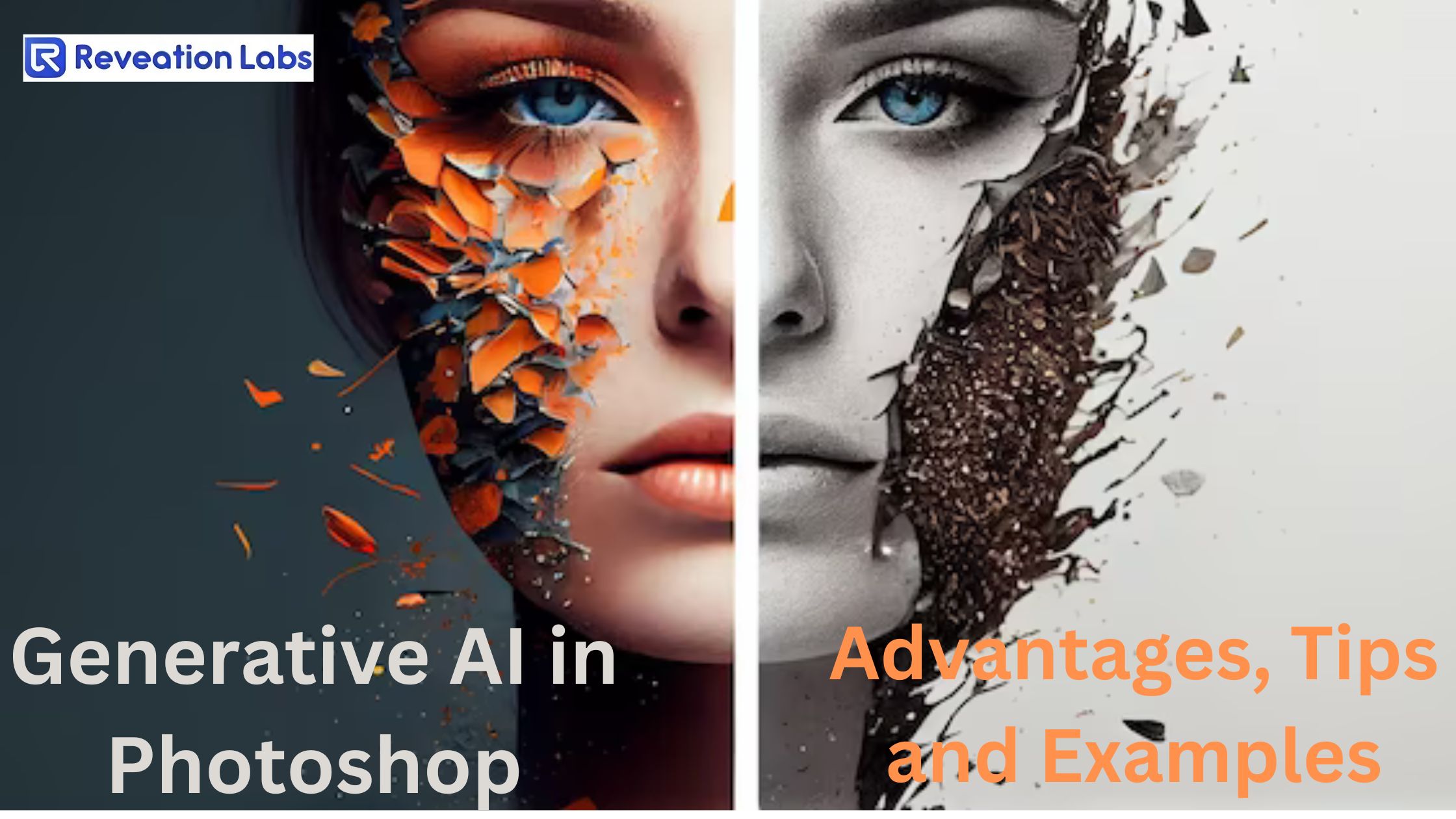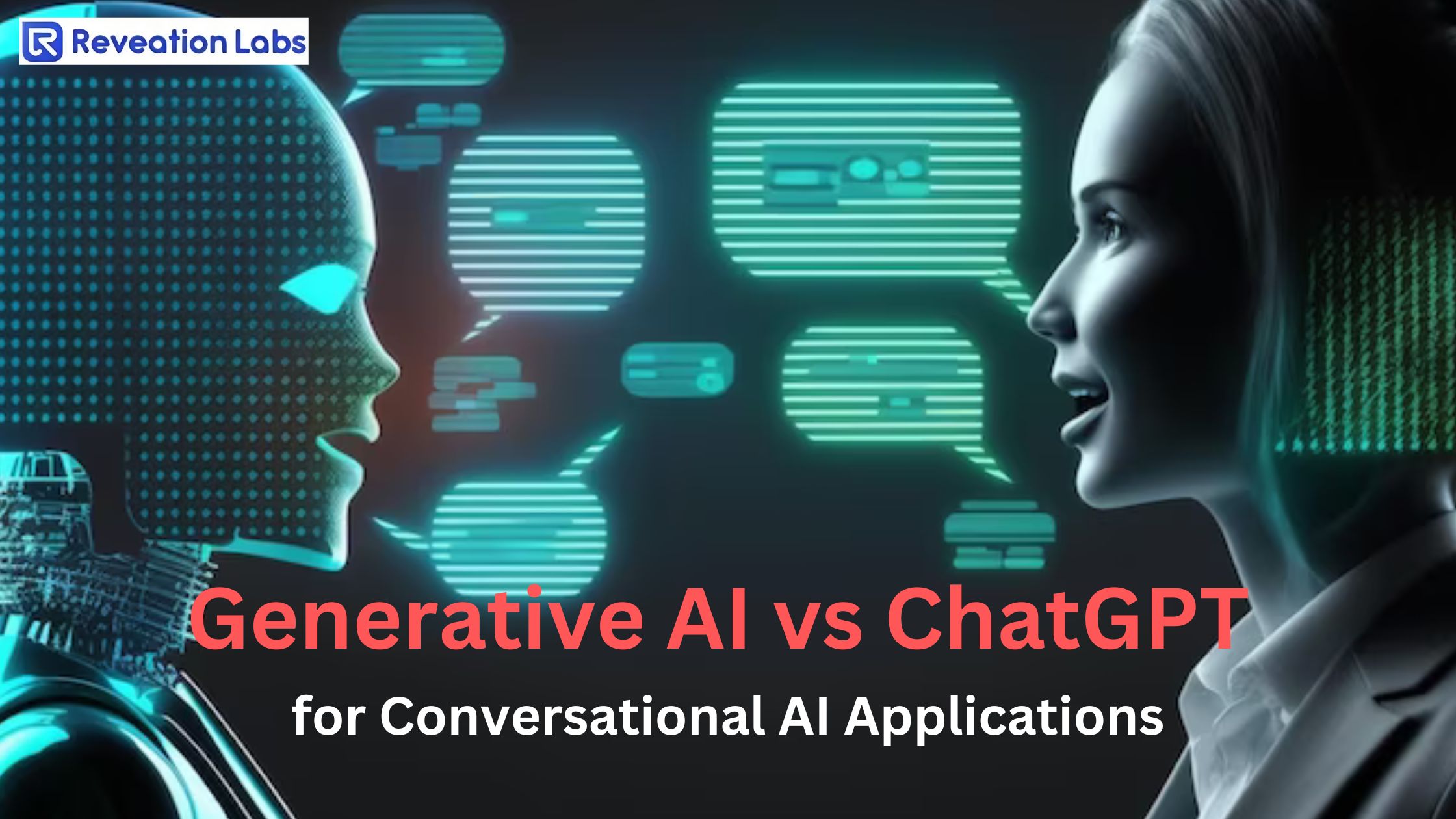Jhansi Pothuru
Wed Nov 22 2023


Ever wondered how your smartphone predicts what you're about to type or how virtual characters in video games seem so realistic? That’s the world of generative AI we are experiencing!
It's like having a virtual artist on your device, creating things that seem almost magical.
But generative AI isn't just about making your favorite video game characters look cooler. It's transforming industries like healthcare, finance, and even fashion.
Imagine a doctor getting insights from AI-generated medical images or a fashion designer using AI to create unique designs. It's not science fiction; it's happening now!
So, if you're a business owner excited about diving into the world of generative AI, but the hiring process is feeling a bit like searching for a needle in a haystack. You're not alone!
Finding the right generative AI developer who aligns with your criteria is quite difficult
So, In this guide, you'll discover the responsibilities of generative AI developers and learn how business owners can effectively hire them.
Contents covered in this blog
The Role of Generative AI Developers
Addressing Common Doubts in Generative AI Development
Hiring Strategies in Generative AI Development
Case Studies in Generative AI Development
Ensuring Ethical and Responsible AI Development
Conclusion
The Role of Generative AI Developers
A. Understanding the Skill Set of Generative AI Developers
1. Programming Languages and Frameworks: Generative AI developers should be proficient in programming languages commonly used in the field, such as Python, Java, or C++. Additionally, they need to be well-versed in popular AI frameworks like TensorFlow or PyTorch. These tools provide the foundation for implementing and training neural networks.
2. Deep Learning and Neural Networks: A strong grasp of deep learning principles and neural networks is essential. Generative AI developers must understand concepts like convolutional neural networks (CNNs) and recurrent neural networks (RNNs). This knowledge is crucial for creating models capable of learning and generating complex patterns.
3. Natural Language Processing (NLP): Proficiency in NLP is key for developers working on text-based generative models. This involves understanding language structure, semantics, and syntax. Skills in tokenization, part-of-speech tagging, and sentiment analysis are essential for building effective natural language models.
B. Real-world Applications of Generative AI
1. Content Generation: Generative AI developers play a pivotal role in creating systems that can autonomously generate content, including text, images, and videos. This application is used in various industries, from news articles and blog posts to creative writing and marketing materials. Developers need to ensure the generated content is coherent, relevant, and aligned with the desired style.
2. Chatbots and Virtual Assistants: Building conversational agents relies on generative AI. Developers need to design models that understand user queries, generate appropriate responses, and continually improve through machine learning. This skill set is crucial for creating efficient and user-friendly chatbots and virtual assistants in customer service, e-commerce, and other domains.
3. Creative Design and Art Generation: Generative AI is increasingly used in creative fields to assist or even autonomously generate art and designs. Developers contribute by designing models capable of producing aesthetically pleasing visuals, music, or other creative works. Understanding the balance between creativity and constraints is crucial for achieving impressive and relevant generative outcomes.
Also Read: Guide on Generative AI for Personalization
Addressing Common Doubts in Generative AI Development
Generative AI development holds immense potential, but as with any emerging technology, doubts and questions inevitably arise. In this context, we'll explore three common concerns and provide insights to help dispel them.
A. Accessibility of Talent
1. Global Talent Pools: One common doubt revolves around the accessibility of skilled generative AI developers. The demand for expertise in this field is growing rapidly, leading to concerns about a shortage of qualified professionals.
However, the beauty of the digital age is the accessibility of global talent pools. Companies are no longer confined to local hires but can tap into a worldwide network of skilled individuals. Platforms like GitHub, Stack Overflow, and various online communities facilitate collaboration and talent acquisition on a global scale. The key is to cast a wide net and leverage the interconnected nature of the tech community.
2. Remote Work and Collaboration Tools: The rise of remote work has further expanded the reach of talent. Generative AI developers can seamlessly collaborate from different corners of the world. Remote work is not just a necessity; it's a strategic advantage. With the abundance of collaboration tools like Slack, Zoom, and collaborative coding platforms, teams can work together efficiently, overcoming geographical barriers. Embracing remote work not only broadens the talent pool but also fosters a diverse and dynamic work environment.
B. Cost Considerations
1. Investment vs. Long-term Returns: The development of generative AI models involves a certain level of investment, both in terms of talent acquisition and computational resources. Some may hesitate due to perceived upfront costs.
However, it’s essential to consider this as a form of investment rather than a mere expenditure. Generative AI has the potential to revolutionize various industries, leading to long-term returns. The automation, efficiency, and innovation it brings can significantly outweigh initial costs. It's a strategic move that positions a business for future success.
2. Comparing In-house vs. Outsourced Development: Another common doubt revolves around whether to develop generative AI capabilities in-house or outsource the work. The decision depends on factors like the organization's existing expertise, the complexity of the project, and budget considerations.
In-house development allows for greater control and a deep integration with the company's culture. On the other hand, outsourcing can bring in specialized expertise and may be more cost-effective for specific projects. The key is to evaluate the specific needs of the organization and strike a balance that aligns with its goals and resources.
C. Integration Challenges
1. Compatibility with Existing Systems: Integrating generative AI into existing systems can raise concerns about compatibility. However, many modern AI frameworks are designed with interoperability in mind. Developers can leverage APIs and standardized protocols for seamless integration.
It's essential to conduct a thorough analysis of existing systems, outline integration requirements, and work with developers who understand the importance of compatibility. With proper planning and execution, the integration process can be smooth and non-disruptive.
2. Scalability and Future-Proofing: Scalability is a valid concern, especially as business needs evolve. Generative AI solutions must be designed with scalability in mind to accommodate growing datasets and increased computational demands.
Future-proofing involves anticipating technological advancements and ensuring that the developed solutions can adapt. Regular updates, monitoring industry trends, and staying engaged with the AI community are essential strategies to keep generative AI systems relevant and scalable over time.
Hiring Strategies in Generative AI Development
A. Identifying the Right Skills
To build a successful generative AI team, it's crucial to identify the right skills. Look for individuals with a solid foundation in programming languages such as Python and expertise in frameworks like TensorFlow or PyTorch.
Deep learning and neural network knowledge are must-haves, along with proficiency in natural language processing (NLP) for text-based projects. Seek out candidates with a passion for creativity and problem-solving, as these qualities are valuable in the dynamic field of generative AI.
B. Building a Strong Team
1. Collaboration and Communication: Building a strong generative AI team goes beyond individual skills. Effective collaboration and communication are essential. Look for team members who can work cohesively, share ideas, and provide constructive feedback. The iterative nature of AI development requires a team that can adapt quickly, learn from each other, and collectively push the boundaries of what generative AI can achieve.
2. Diversity in Skill Sets: A well-rounded generative AI team benefits from a diverse range of skill sets. While core technical skills are vital, consider complementing them with expertise in areas like user experience (UX) design, domain knowledge, and project management. Diverse perspectives contribute to creative problem-solving and enhance the team's ability to tackle complex challenges from multiple angles.
C. Leveraging Freelancers and Agencies
1. Pros and Cons: Integrating freelancers or agencies into your generative AI projects can bring several advantages. Freelancers often offer specialized skills for short-term projects, providing a cost-effective solution for specific tasks.
Agencies, on the other hand, may bring a team of experts with diverse skill sets. However, it's important to note potential challenges, such as communication issues and varying levels of commitment. Consistency and alignment with your project goals are crucial considerations.
2. Project-specific vs. Long-term Relationships: When considering freelancers or agencies, decide whether you need assistance on a project-specific basis or for long-term collaboration. For short-term projects with specific objectives, freelancers might be the ideal choice.
Agencies can provide ongoing support and scalability, making them suitable for long-term partnerships. Carefully assess the nature of your generative AI initiatives and choose collaborators whose engagement aligns with your project timelines and goals.
Sugegsted: How ChatGPT Developers Can Transform Your Business?
Case Studies in Generative AI Development
A. Success Stories of Businesses Implementing Generative AI
1. Netflix's Content Recommendation System: Netflix utilizes generative AI to enhance its content recommendation system. By analyzing user behavior, viewing history, and preferences, Netflix's recommendation engine generates personalized suggestions, improving user engagement and satisfaction. The success lies in the ability of generative models to understand and predict individual viewing patterns, contributing to the platform's continued growth.
2. Adobe's Project Scribbler: Adobe's Project Scribbler is a remarkable example of generative AI in creative design. This tool employs deep learning to transform rough sketches into polished digital artwork. It understands the artist's intent, refines details, and adds color, making the design process more efficient and accessible. Project Scribbler showcases the potential of generative AI to empower creatives in various industries.
B. Lessons Learned from Failures
1. Microsoft's Tay: Microsoft's Tay, a chatbot launched on Twitter, aimed to engage with users and learn from conversations. However, due to a lack of robust filters and moderation, Tay quickly learned and reproduced offensive content. This incident highlights the importance of implementing ethical guidelines and strong moderation systems when deploying generative AI, emphasizing the need for continuous monitoring and control.
2. Google's Image Recognition Mishap: Faced challenges when Google image recognition system mistakenly labeled images of people of color as "gorillas." This underscores the importance of training generative AI models on diverse datasets to avoid biased outcomes. It serves as a lesson for businesses to prioritize inclusivity and diversity in the data used for training to prevent such unintended consequences.
Ensuring Ethical and Responsible AI Development
A. Importance of Ethical Considerations
In the world of AI development, ethics play a crucial role. It's not just about creating powerful and innovative systems but doing so responsibly. Here's why ethical considerations are so important:
1. User Trust: Ethical AI development builds trust with users. When people know that their data is handled responsibly and that AI systems are designed with fairness in mind, they are more likely to engage with and trust those systems.
2. Avoiding Harm: Ethical considerations prevent unintentional harm that can arise from biased algorithms or poorly implemented AI. By prioritizing ethical guidelines, developers strive to ensure that their creations have a positive impact on individuals and society as a whole.
3. Long-term Viability: Businesses and technologies that adhere to ethical standards are more likely to be sustainable in the long run. Ethical practices help avoid controversies, legal issues, and public backlash, fostering a positive reputation for both the technology and the organizations behind it.
B. Mitigating Bias in AI Models
1. Diverse and Representative Data: One key aspect of ethical AI development is addressing bias in data. AI models learn from the data they are trained on, so using diverse and representative datasets helps mitigate biases. If training data is skewed, the model can perpetuate and even amplify those biases in its predictions or decisions.
2. Explainability and Transparency: Making AI models more understandable and transparent is another strategy. When users, developers, and stakeholders can comprehend how a model arrives at its decisions, it becomes easier to identify and rectify biases. Additionally, transparency builds accountability in AI systems.
3. Continuous Monitoring and Evaluation: AI models should be continuously monitored post-deployment. This includes regularly evaluating their performance to identify any biases that might emerge over time. By staying vigilant, developers can make necessary adjustments to ensure fairness in ongoing operations.
C. Staying Compliant with Data Protection Regulations
1. Understanding Data Privacy Laws: In the era of AI, respecting data protection regulations is paramount. Familiarize yourself with laws like GDPR (General Data Protection Regulation) or other regional data protection laws. These regulations outline the proper procedures for collecting, processing, and storing personal data.
2. Data Anonymization and Encryption: Implementing robust data anonymization and encryption practices is essential for compliance. This helps protect individuals' privacy by ensuring that their personal information is either entirely anonymous or securely encrypted during storage and transmission.
3. User Consent and Transparency: Obtain clear and informed consent from users before collecting and using their data. Being transparent about how their data will be used and for what purposes is crucial. This not only aligns with ethical principles but also ensures compliance with data protection regulations.
Conclusion
In this exploration of generative AI development, we delved into the essential skills for developers, real-world applications, hiring strategies, and case studies. Emphasizing the importance of ethical considerations, we addressed concerns surrounding talent accessibility, cost, and integration challenges. Success stories highlighted how businesses across diverse sectors have leveraged generative AI, while lessons from failures underscored the need for responsible development practices.
As we conclude, it's clear that generative AI has the potential to reshape industries, drive innovation, and enhance user experiences. The key is for businesses to recognize the value of investing in the right talent, fostering collaboration, and approaching development ethically. By embracing generative AI, organizations can unlock new possibilities in content generation, customer interactions, and creative design, ultimately gaining a competitive edge in the evolving landscape of artificial intelligence.
Why Reveation Labs
We are a team that is technically proficient and simultaneously caring for your business. Our ideology is to provide the latest technologies that suit your business well.
Let’s discuss your requirements!
Give your business the next-gen technology it deserves. Be a part of our family of successful enterprises that work on high-end software solutions.
Experts
In all the latest technologies and developments.
Creative
To innovate the best solutions and pick the right technology for you.
Ethical
To always put you first & respect your business values and procedures.
Dedicated
To meet the deadlines and help you until the very end and beyond.
Approachable
For all your business needs and queries at any point of time.
Transparent
In our ways of working.




